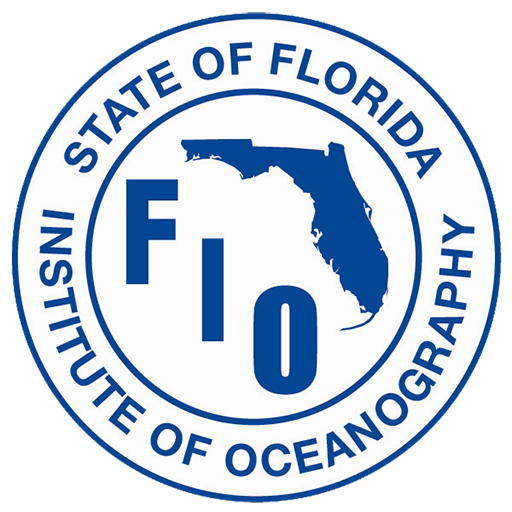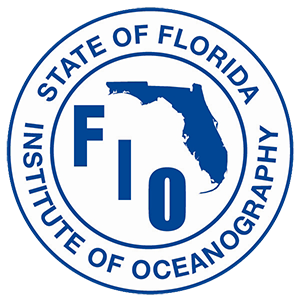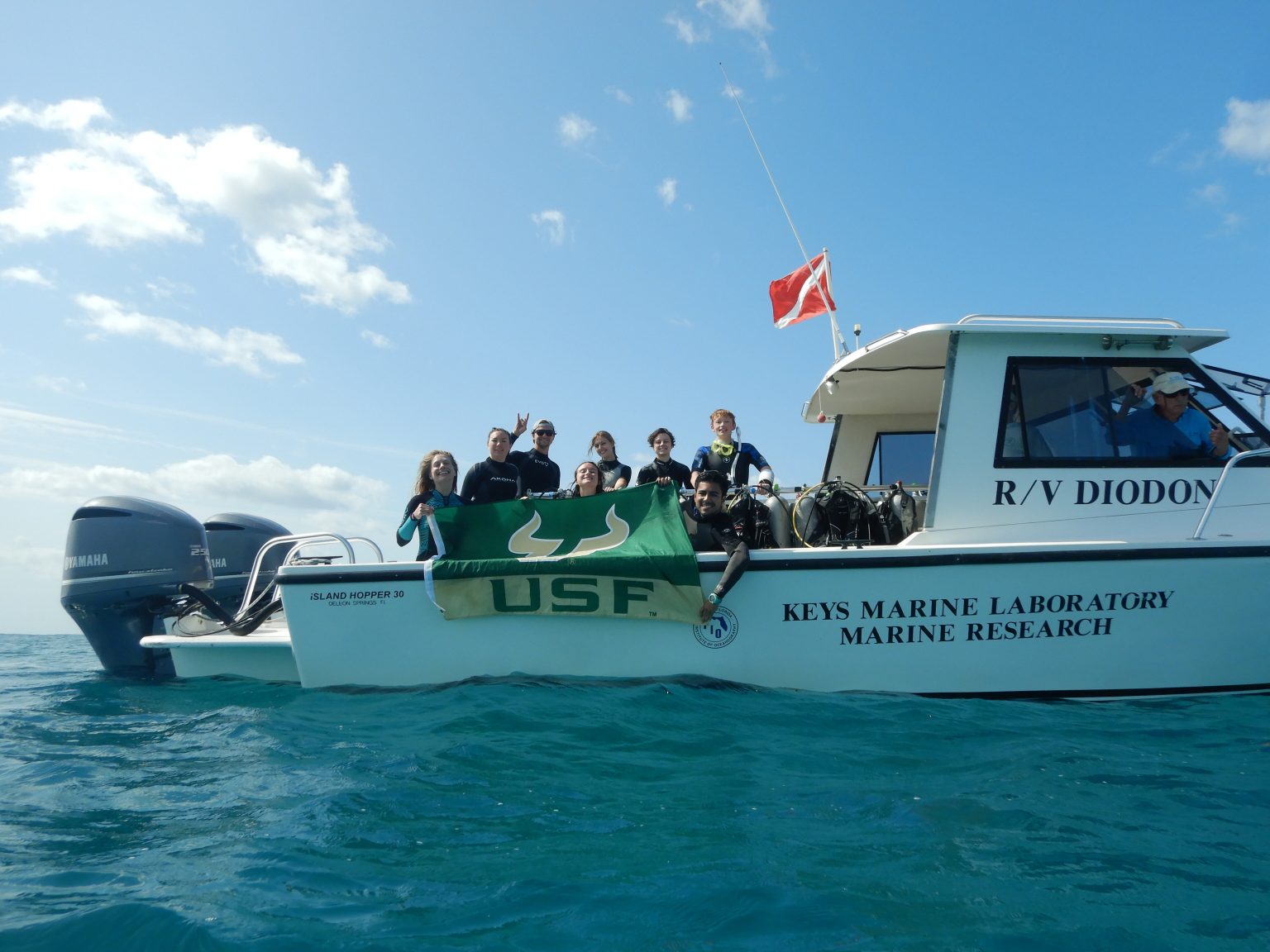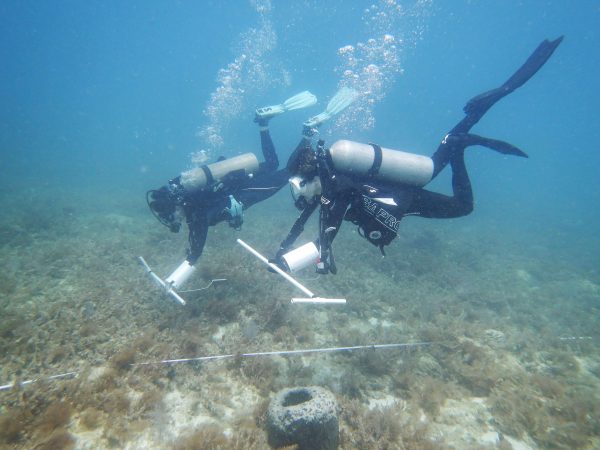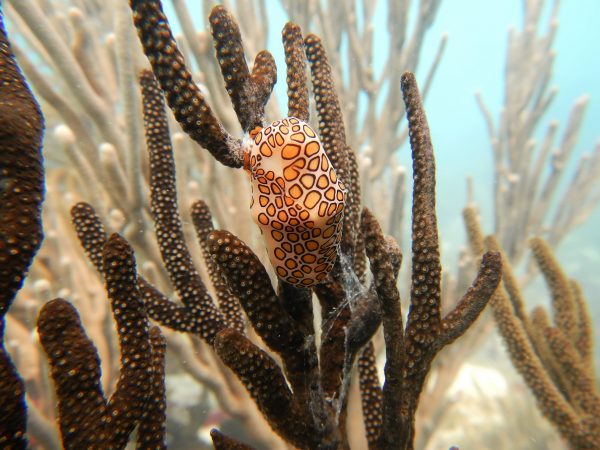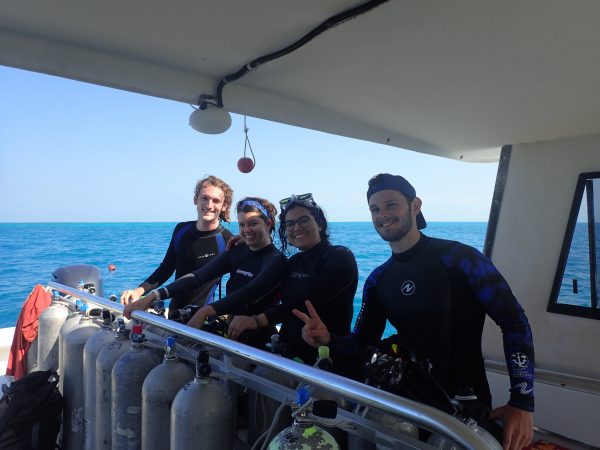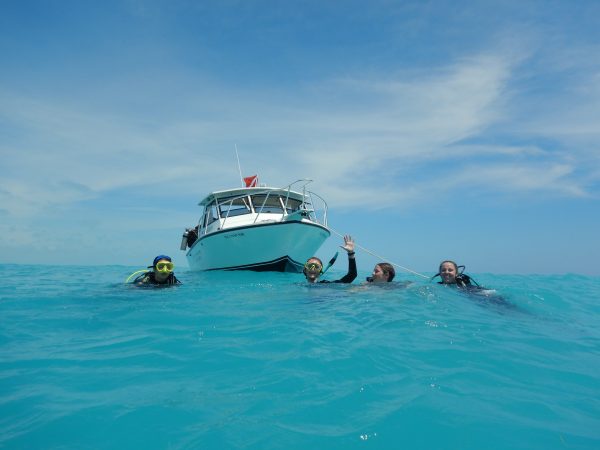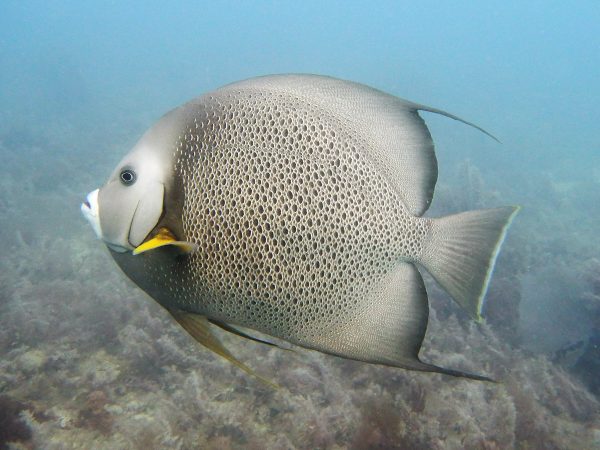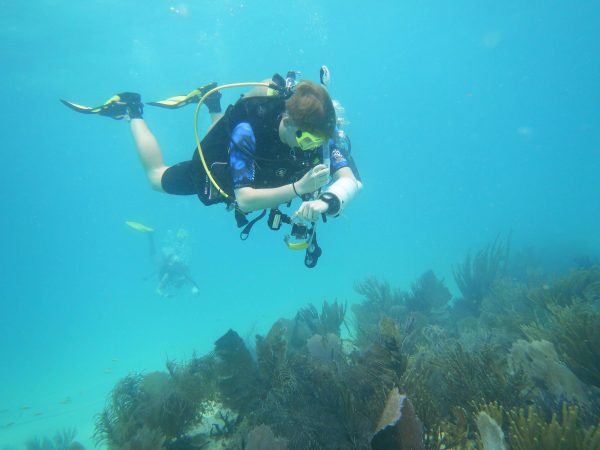Did you hear that the Keys Marine Laboratory (KML) recently hosted sixteen University of South Florida (USF) undergraduate students for the Department of Integrative Biology’s first-ever Scientific Diving course?
During two weekends in early April, our crew assisted USF Professor Chantale Begin and USF Dive Safety Officer Ben Meister with this student-focused opportunity which was made possible by the Florida Institute of Oceanography (FIO)-sponsored “KML Lab Time Award”. Each group of eight students participated in a total of three days onboard KML’s R/V Diodon, and completed eight field-intensive scientific dives within the Florida Keys National Marine Sanctuary. A large majority of the students were recently certified Open Water Divers and their time at KML gave them the opportunity to gain proficiency in essential dive skills/safety, learn a variety of marine survey/underwater photography techniques, and enhance their marine species identification skills. After each day of diving, students partook in classroom sessions led by the USF Instructors.
